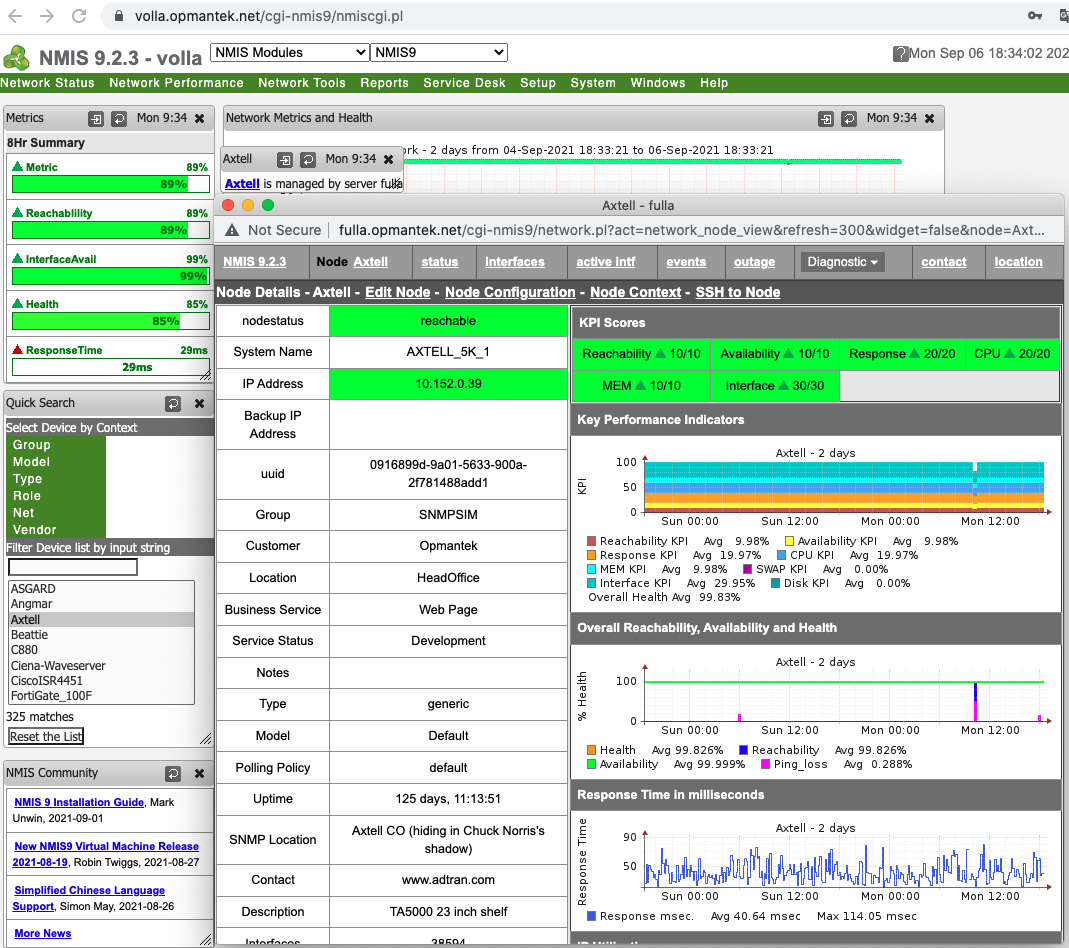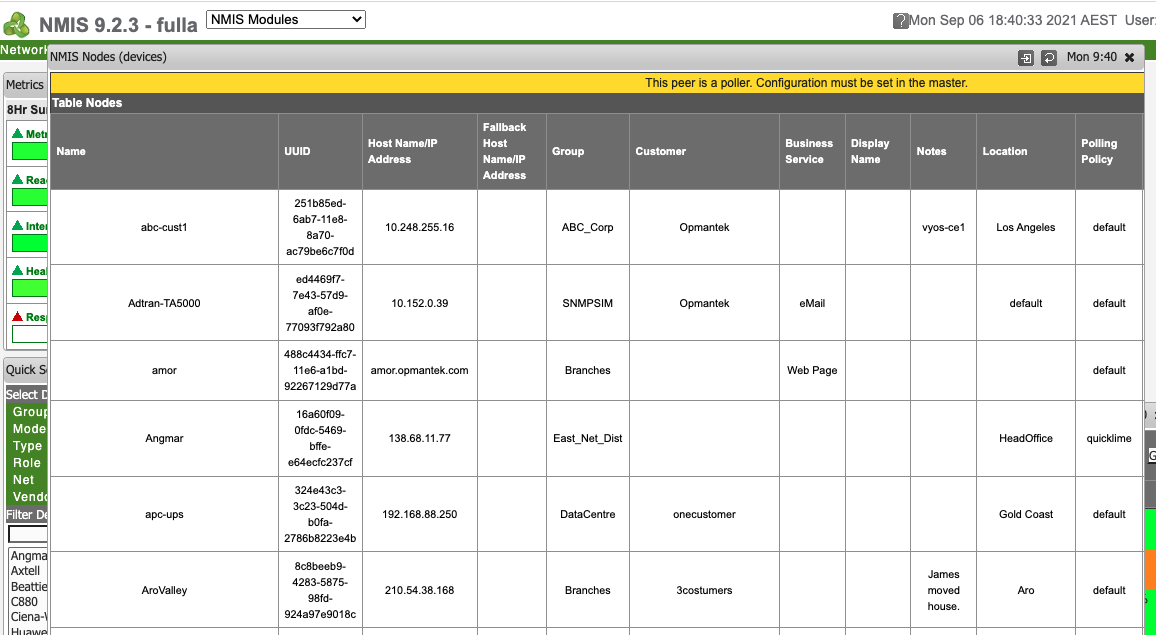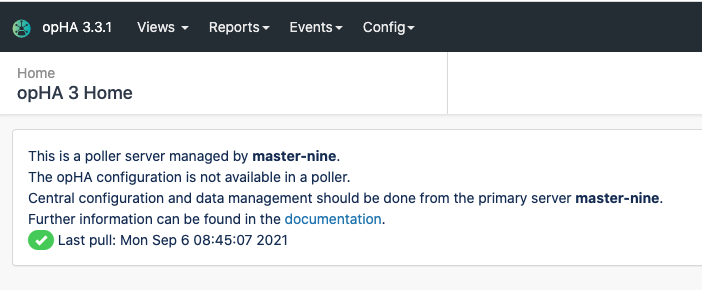In this document, a description about the opHA 3 features when integrating with other products will be made.
NMIS 9
opHA will synchronise all the NMIS 9 database information. That means:
- Log files from the pollers will not be synchronise
- RRD files will not be moved
The functional differences between a primary, poller and standalone server are as follows:
Standalone Server
- It will poll all the local nodes
- All the local nodes can be managed locally.
Primary Server
- It can poll local nodes
- It will have information about the remote nodes
- It will create network metrics for local and remove nodes
- Just Local nodes can be edited
- It will redirect to the poller to read information for remote nodes
Remote node is redirected from the primary.
Poller Server
- It will poll local nodes.
- Nodes must be edited from primary server.
- All the information can be read from the poller.
Node configuration view in the poller: Not possible edition.
Summary
| Action | Standalone | Primary | Poller |
|---|---|---|---|
| View local Nodes | |||
| View Remote Nodes | |||
| Edit Local Nodes | |||
| Edit remote Nodes | |||
| Poll Local Nodes | |||
| Poll Remote Nodes |
opHA
The views from the poller and the primary will change.
Standalone Server
We will access the main screen, just the local information will be available.
Primary Server
We will see all the actions and all the pollers:
Poller Server
We will see a message that indicate us that it is a poller:
opEvents
...
opConfig
...
opReports
...



